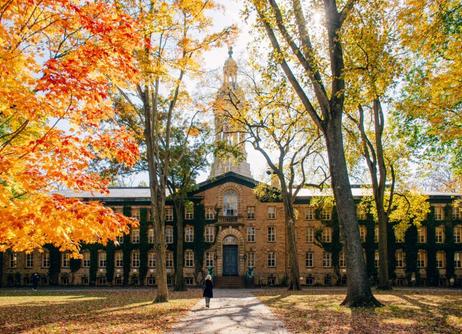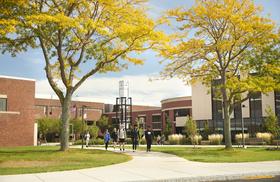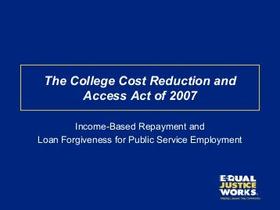Community College to Ivy League: Is It Possible?
For many students and parents, the dream of attending an Ivy League institution after beginning at a community college is simultaneously inspiring and daunting. In 2025, the pathway from a two-year institution to one of the eight schools of the Ivy League remains possible — but it remains rare, highly competitive, and dependent on strategic planning, academic excellence, and the right institutional partnerships.
Why the question matters
Starting at a community college offers tangible benefits: lower tuition, smaller classes, flexible schedules, and a chance to build or rebuild an academic record. According to EducationData, the average annual tuition at a public community college in 2025 is approximately US$3,598 for in-district students and about US$8,622 for out-of-district students. In contrast, Ivy League sticker prices for the 2025-26 academic year exceed US$64,000 for tuition and fees alone.
From a budgetary perspective, starting at a community college can be a cost-effective strategy — and for students aspiring to move on to an elite four-year campus, it can be a valuable leg of the journey. However, it is not simply a cost-saving move; it must be grounded in a well-executed transfer strategy.
How difficult is it? Transfer admissions in 2025
First, it’s important to understand the broader context of transfer admissions. A 2025 update from BestColleges shows that transfer acceptance rates at four-year institutions vary dramatically — with Ivy League and other highly selective schools typically admitting less than 10% of transfer applicants.
For example:
Harvard University admits fewer than 1% of transfer applicants.
Some Ivy-league schools accept just 1-3% of transfers from all institutions.
Therefore, for a student at a community college hoping to transfer into an Ivy League institution, the odds are extremely narrow — though not zero. A strong performance, an impactful narrative, and strategic timing matter enormously.
What makes a successful transfer from a community college?
There are several key factors that separate students who make the leap from those who don’t:
Academic excellence at the community college level
A near-perfect GPA in rigorous coursework matters. Admissions officers at elite four-year institutions will scrutinize college-level performance more closely than high school grades for transfer applicants. According to advising resources, community college students should treat their first two years as a chance to demonstrate academic resilience and mastery. Ivy CoachStrategic selection of coursework and institution
Choosing courses that align with the intended major and are transferable is crucial. Credits must count toward the bachelor’s degree at the target institution, and articulation agreements or transfer pathways make a difference. Scholarships360 notes that one of the largest barriers is simply credit non-transfer. Scholarships360A compelling personal narrative and extracurricular impact
Since purely academic credentials may not differentiate an applicant at this level, a meaningful story — showing growth, leadership, and unique contribution — is essential. Advisors recommend shaping letters of recommendation early and aligning essays with how the student will contribute at the target institution.Understanding timing and institutional policies
Transfer processes often differ significantly from first-year admissions: deadlines, available seats, and requirements vary. Many Ivy League schools only accept a handful of transfers each year, and timing can be critical.
Real-world example and insight
While public data on community college to Ivy League transfers is limited, professional admissions consultants emphasize that the students who succeed often fall into one of these categories:
They started at a community college due to financial constraints, excelled with near-perfect grades, then applied to an Ivy or comparable top university.
They have a “turnaround” story: a modest high school record, then clear academic momentum in college, coupled with leadership or service.
They align their community college coursework with a major offered at the target institution and often attend a community college with strong transfer pathways.
One specialist blog notes: “Transfer students round out the diversity of an Ivy League student body … These unique students often come from first-generation and low-income families and likely have completed their first or second undergraduate years at a community college.”
Tuition and cost considerations
Let’s compare cost dynamics to underscore why starting at a community college can make financial sense:
Average annual tuition for a public community college (in-district) in 2025: ~US$3,598. Education Data Initiative
Average annual tuition + fees for public community colleges: around US$5,238 (in-state) in 2025-26.
Average annual cost for an Ivy League undergraduate (sticker price): beginning around US$90,000 including room/board for 2024-25, trending higher.
For families mindful of cost, starting at a community college while pursuing transfer to an elite institution may represent a lower-risk, budget-friendly path — so long as the academic strategy is sound and the student remains highly motivated.
Policy and demographic trends in 2025
Additional factors impact the viability of the pathway:
Many Ivy League schools and elite institutions are increasing efforts to admit transfer students from non-traditional backgrounds, including community colleges, as a matter of both academic and socioeconomic diversity. Ivy Coach
At the same time, transfer seats at elite universities remain extremely limited, especially for students coming from community colleges without existing articulation agreements.
Policymakers and sector analysts highlight that even though community colleges are designed to serve as a starting point, many students still face significant barriers: credit loss, unclear transfer pathways, and limited advising.
Demographically, students from first-generation, underrepresented, or low-income backgrounds often begin at community colleges, and in some cases these students are precisely those institutions that aim to serve via transfer-friendly initiatives.
What students and parents should ask and prepare
If your goal is to transfer from a community college to an Ivy League school, here is a checklist of questions and actions:
Does your community college have articulation or guaranteed transfer agreements with four-year schools — especially selective ones?
Are you selecting the most rigorous and transferable courses for your intended major?
Are you achieving top grades and demonstrating upward academic momentum?
Are you building meaningful extracurricular or service engagement that can be showcased in applications and essays?
Have you sought advising on the transfer process early — including deadlines, application requirements, and prerequisite completion?
Are you evaluating financial aid, scholarships, and net cost at both your community college and your target four-year institution? (For example, some Ivy League schools offer generous aid, including for transfers.)
Have you considered alternative transfer destinations or “near-Ivy” selective institutions as part of a broader strategy? (For example, using a community college → strong state university → then another transfer, or direct to a top private school.)
A balanced conclusion
Yes — it is possible to transfer from a community college to an Ivy League school in 2025. But the reality is that this pathway remains the exception rather than the norm. It demands rigorous academic work, strategic planning, meaningful achievement, and often, some measure of privilege in terms of preparation, guidance, and resources.
For most students, the legacy value of attending an Ivy League is more modest than the public perception suggests, and many other excellent universities — including highly selective state and private schools — offer comparable academic experiences and outcomes. As one editorial advises: “While rare, it is possible… but this is not the make-or-break of your life or career.” Scholarships360
For parents, students, and educators navigating this path, the smart approach is to treat the community college years not just as a stepping stone, but as a foundational phase: build scholarship, develop leadership, and aim for a four-year transfer — while keeping a realistic and informed view of options. For schools and advisors, it means providing robust transfer-planning resources, building partnerships, and clarifying pathways early on.














